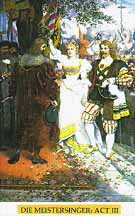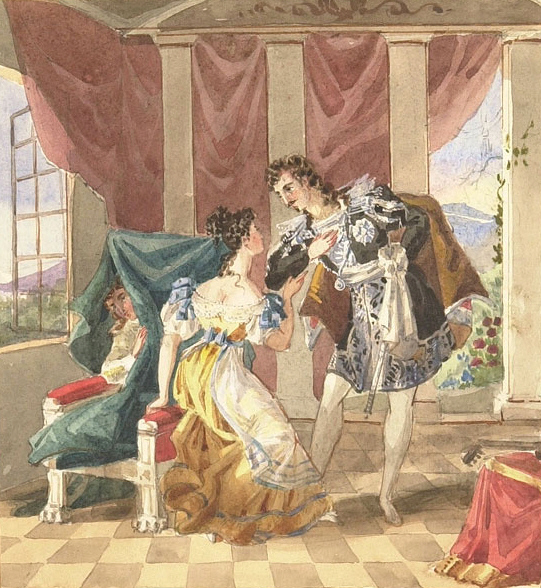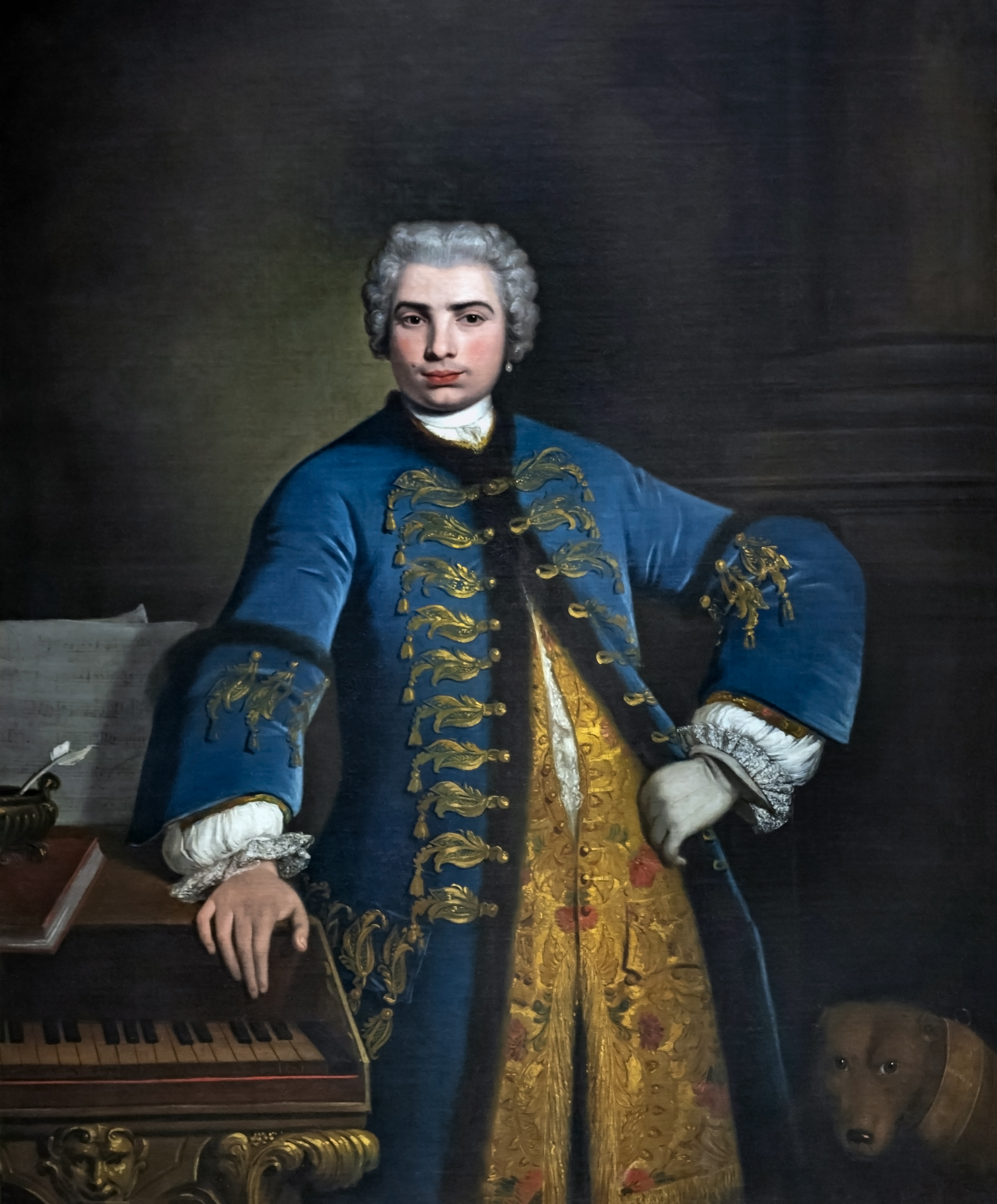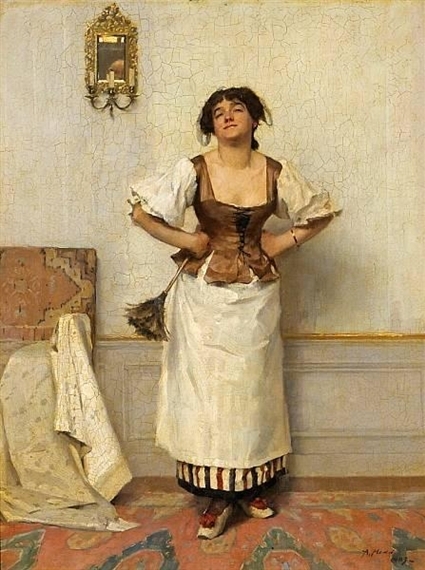|
Wilma Lipp
Wilma Lipp (; 26 April 1925 – 26 January 2019) was an Austrian operatic soprano and academic voice teacher. A long-time member of the Vienna State Opera, she was particularly associated with the role of the Queen of the Night in Mozart's ''Die Zauberflöte'', a role she performed internationally more than 400 times. She was awarded the title Kammersängerin at age 28, and was an honorary member of the Vienna State Opera, among other honours. Career Lipp studied in Vienna with Friedel Sindel, Paola Novikova, Anna Bahr-Mildenburg and Alfred Jerger, and also with Toti Dal Monte in Milan. She made her stage debut in Vienna as Rosina in Rossini's ''The Barber of Seville'' in 1943 in an open-air performance, and joined the Vienna State Opera in 1945. She won international attention as the Queen of the Night in Mozart's ''Die Zauberflöte'' in a 1948 performance conducted by Josef Krips. She sang the role then also at La Scala in Milan, at the Paris Opéra, in Hamburg and in Brusse ... [...More Info...] [...Related Items...] OR: [Wikipedia] [Google] [Baidu] |
Großes Festspielhaus
The ''Großes Festspielhaus'' (Large Festival House), in its current form, was designed by architect Clemens Holzmeister in 1956 for the Salzburg Festival in Austria. It was inaugurated on 26 July 1960 with a performance of Richard Strauss Richard Georg Strauss (; 11 June 1864 – 8 September 1949) was a German composer, conductor, pianist, and violinist. Considered a leading composer of the late Romantic and early modern eras, he has been described as a successor of Richard Wag ...' '' Der Rosenkavalier'' conducted by Herbert von Karajan, who also worked with Holzmeister on aspects of the building's design. The Large Festival House includes office space and tunneling into the Mönchsberg as well as a 2,179-seat performance space adaptable for both scenic and non-scenic events and acoustically scalable down for piano and song recitals. The stage is one of the widest in the world, at . The auditorium is square. Access from the street to the lobby is through five bronze d ... [...More Info...] [...Related Items...] OR: [Wikipedia] [Google] [Baidu] |
Die Entführung Aus Dem Serail
' () ( K. 384; ''The Abduction from the Seraglio''; also known as ') is a singspiel in three acts by Wolfgang Amadeus Mozart. The German libretto is by Gottlieb Stephanie, based on Christoph Friedrich Bretzner's ''Belmont und Constanze, oder Die Entführung aus dem Serail''. The plot concerns the attempt of the hero Belmonte, assisted by his servant Pedrillo, to rescue his beloved Constanze from the seraglio of Pasha Selim. The work premiered on 16 July 1782 at the Vienna Burgtheater, with the composer conducting. Origins The company that first sponsored the opera was the ''Nationalsingspiel'' ("national Singspiel"), a pet project (1778–1783) of the Austrian emperor Joseph II. The Emperor had set up the company to perform works in the German language (as opposed to the Italian opera style widely popular in Vienna). This project was ultimately given up as a failure, but along the way it produced a number of successes, mostly a series of translated works. Mozart's opera emer ... [...More Info...] [...Related Items...] OR: [Wikipedia] [Google] [Baidu] |
Die Meistersinger Von Nürnberg
(; "The Master-Singers of Nuremberg"), WWV 96, is a music drama, or opera, in three acts, by Richard Wagner. It is the longest opera commonly performed, taking nearly four and a half hours, not counting two breaks between acts, and is traditionally not cut. With Hans von Bülow conducting, it was first performed on 21 June 1868 at the National Theater in Munich, today home of Bavarian State Opera. The story is set in Nuremberg in the mid-16th century. At the time, Nuremberg was a free imperial city and one of the centers of the Renaissance in Northern Europe. The story revolves around the city's guild of '' Meistersinger'' (Master Singers), an association of amateur poets and musicians who were primarily master craftsmen of various trades. The master singers had developed a craftsmanlike approach to music-making, with an intricate system of rules for composing and performing songs. The work draws much of its atmosphere from its depiction of the Nuremberg of the era and th ... [...More Info...] [...Related Items...] OR: [Wikipedia] [Google] [Baidu] |
Don Giovanni
''Don Giovanni'' (; K. 527; Vienna (1788) title: , literally ''The Rake Punished, or Don Giovanni'') is an opera in two acts with music by Wolfgang Amadeus Mozart to an Italian libretto by Lorenzo Da Ponte. Its subject is a centuries-old Spanish legend about a libertine as told by playwright Tirso de Molina in his 1630 play '' El burlador de Sevilla y convidado de piedra''. It is a '' dramma giocoso'' blending comedy, melodrama and supernatural elements (although the composer entered it into his catalogue simply as '' opera buffa''). It was premiered by the Prague Italian opera at the National Theater (of Bohemia), now called the Estates Theatre, on 29 October 1787. ''Don Giovanni'' is regarded as one of the greatest operas of all time and has proved a fruitful subject for commentary in its own right; critic Fiona Maddocks has described it as one of Mozart's "trio of masterpieces with librettos by Da Ponte". Composition and premiere The opera was commissioned after the succ ... [...More Info...] [...Related Items...] OR: [Wikipedia] [Google] [Baidu] |
The Marriage Of Figaro
''The Marriage of Figaro'' ( it, Le nozze di Figaro, links=no, ), K. 492, is a ''commedia per musica'' ( opera buffa) in four acts composed in 1786 by Wolfgang Amadeus Mozart, with an Italian libretto written by Lorenzo Da Ponte. It premiered at the Burgtheater in Vienna on 1 May 1786. The opera's libretto is based on the 1784 stage comedy by Pierre Beaumarchais, ''La folle journée, ou le Mariage de Figaro'' ("The Mad Day, or The Marriage of Figaro"). It tells how the servants Figaro and Susanna succeed in getting married, foiling the efforts of their philandering employer Count Almaviva to seduce Susanna and teaching him a lesson in fidelity. Considered one of the greatest operas ever written, it is a cornerstone of the repertoire and appears consistently among the top ten in the Operabase list of most frequently performed operas. In 2017, BBC News Magazine asked 172 opera singers to vote for the best operas ever written. ''The Marriage of Figaro'' came in first out ... [...More Info...] [...Related Items...] OR: [Wikipedia] [Google] [Baidu] |
Idomeneo
' (Italian for ''Idomeneus, King of Crete, or, Ilia and Idamante''; usually referred to simply as ''Idomeneo'', K. 366) is an Italian language opera seria by Wolfgang Amadeus Mozart. The libretto was adapted by Giambattista Varesco from a French text by Antoine Danchet, based on a 1705 play by Crébillion père, which had been set to music by André Campra as '' Idoménée'' in 1712. Mozart and Varesco were commissioned in 1780 by Karl Theodor, Elector of Bavaria for a court carnival. He probably chose the subject, though it may have been Mozart. The work premiered on 29 January 1781 at the Cuvilliés Theatre in Munich, Germany. Composition The libretto clearly draws inspiration from Metastasio in its overall layout, the type of character development, and the highly poetic language used in the various numbers and the ''secco'' and ''stromentato'' recitatives. The style of the choruses, marches, and ballets is very French, and the shipwreck scene towards the end of act I is ... [...More Info...] [...Related Items...] OR: [Wikipedia] [Google] [Baidu] |
Coloratura
Coloratura is an elaborate melody with runs, trills, wide leaps, or similar virtuoso-like material,''Oxford American Dictionaries''.Apel (1969), p. 184. or a passage of such music. Operatic roles in which such music plays a prominent part, and singers of these roles, are also called coloratura.Steane, J. B.; Jander, Owen, "Coloratura" in Sadie (1992) 1: 907. Its instrumental equivalent is ornamentation. Coloratura is particularly found in vocal music and especially in operatic singing of the 18th and 19th centuries. The word ''coloratura'' ( , , ) means "coloring" in Italian, and derives from the Latin word ''colorare'' ("to color"). History The term ''coloratura'' was first defined in several early non-Italian music dictionaries: Michael Praetorius's ''Syntagma musicum'' (1618); Sébastien de Brossard's ''Dictionaire de musique'' (1703); and Johann Gottfried Walther's ''Musicalisches Lexicon'' (1732). In these early texts "the term is dealt with briefly and always wit ... [...More Info...] [...Related Items...] OR: [Wikipedia] [Google] [Baidu] |
Soubrette
A soubrette is a type of operatic soprano voice ''fach'', often cast as a female stock character in opera and theatre. The term arrived in English from Provençal via French, and means "conceited" or "coy". Theatre In theatre, a soubrette is a comedy character who is vain and girlish, mischievous, lighthearted, coquettish and gossipy—often a chambermaid or confidante of the ingénue. She often displays a flirtatious or even sexually aggressive nature. The soubrette appeared in commedia dell'arte scenarios, often in the role of Columbina, where the actress would provide the details of her behavior and dialogue. From there, she moved to the works of Molière, which were influenced by the Commedia; the role of Dorine in ''Tartuffe'' (1664) fits the description. A famous example, though a hundred years later, is Suzanne in Beaumarchais' ''Le Mariage de Figaro'' (1784). Opera In classical music and opera, the term ''soubrette'' refers to both a soprano voice type and a type of op ... [...More Info...] [...Related Items...] OR: [Wikipedia] [Google] [Baidu] |
Siegfried (opera)
''Siegfried'' (), WWV 86C, is the third of the four music dramas that constitute '' Der Ring des Nibelungen'' (''The Ring of the Nibelung''), by Richard Wagner. It premiered at the Bayreuth Festspielhaus on 16 August 1876, as part of the first complete performance of ''The Ring'' cycle. Background and context The libretto of ''Siegfried'' was drafted by Wagner in November–December 1852, based on an earlier version he had prepared in May–June 1851 and originally entitled ''Jung-Siegfried'' (''Young Siegfried''), later changed to ''Der junge Siegfried''. The musical composition was commenced in 1856, but not finally completed until 1871.Millington, (n.d.) The libretto arose from Wagner's gradual reconception of the project he had initiated with his libretto ''Siegfrieds Tod'' (''Siegfried's Death'') which was eventually to be incarnated as ''Götterdämmerung'', the final section of the Ring cycle. Having grappled with his text for ''Siegfrieds Tod'', and indeed having und ... [...More Info...] [...Related Items...] OR: [Wikipedia] [Google] [Baidu] |
Bayreuth Festival
The Bayreuth Festival (german: link=no, Bayreuther Festspiele) is a music festival held annually in Bayreuth, Germany, at which performances of operas by the 19th-century German composer Richard Wagner are presented. Wagner himself conceived and promoted the idea of a special festival to showcase his own works, in particular his monumental cycle and ''Parsifal''. Performances take place in a specially designed theatre, the Bayreuth Festspielhaus. Wagner personally supervised the design and construction of the theatre, which contained many architectural innovations to accommodate the huge orchestras for which Wagner wrote as well as the composer's particular vision about the staging of his works. The Festival has become a pilgrimage destination for Wagnerians and classical-music enthusiasts. Origins The origins of the Festival itself lie rooted in Richard Wagner's interest in establishing his financial independence. A souring of the relationship with his patron, Ludwig II ... [...More Info...] [...Related Items...] OR: [Wikipedia] [Google] [Baidu] |
Lucia Di Lammermoor
''Lucia di Lammermoor'' () is a (tragic opera) in three acts by Italian composer Gaetano Donizetti. Salvadore Cammarano wrote the Italian-language libretto loosely based upon Sir Walter Scott's 1819 historical novel '' The Bride of Lammermoor''. Donizetti wrote ''Lucia di Lammermoor'' in 1835, when he was reaching the peak of his reputation as an opera composer. Gioachino Rossini had recently retired and Vincenzo Bellini had died shortly before the premiere of ''Lucia'' leaving Donizetti as "the sole reigning genius of Italian opera".Mackerras, p. 29 Not only were conditions ripe for Donizetti's success as a composer, but there was also a widespread interest in the history and culture of Scotland. The perceived romance of its violent wars and feuds, as well as its folklore and mythology, intrigued 19th century readers and audiences. Sir Walter Scott dramatized these elements in his novel ''The Bride of Lammermoor'', which inspired several musical works including ''Lucia''.Macker ... [...More Info...] [...Related Items...] OR: [Wikipedia] [Google] [Baidu] |
Un Ballo In Maschera
''Un ballo in maschera'' ''(A Masked Ball)'' is an 1859 opera in three acts by Giuseppe Verdi. The text, by Antonio Somma, was based on Eugène Scribe's libretto for Daniel Auber's 1833 five act opera, '' Gustave III, ou Le bal masqué''. The plot concerns the assassination in 1792 of King Gustav III of Sweden who was shot, as the result of a political conspiracy, while attending a masked ball, dying of his wounds thirteen days later. It was to take over two years between the commission from Naples, planned for a production there, and its premiere performance at the Teatro Apollo in Rome on 17 February 1859. In becoming the ''Un ballo in maschera'' which we know today, Verdi's opera (and his libretto) underwent a significant series of transformations and title changes, caused by a combination of censorship regulations in both Naples and Rome, as well as by the political situation in France in January 1858. Based on the Scribe libretto and begun as ''Gustavo III'' set in Sto ... [...More Info...] [...Related Items...] OR: [Wikipedia] [Google] [Baidu] |








